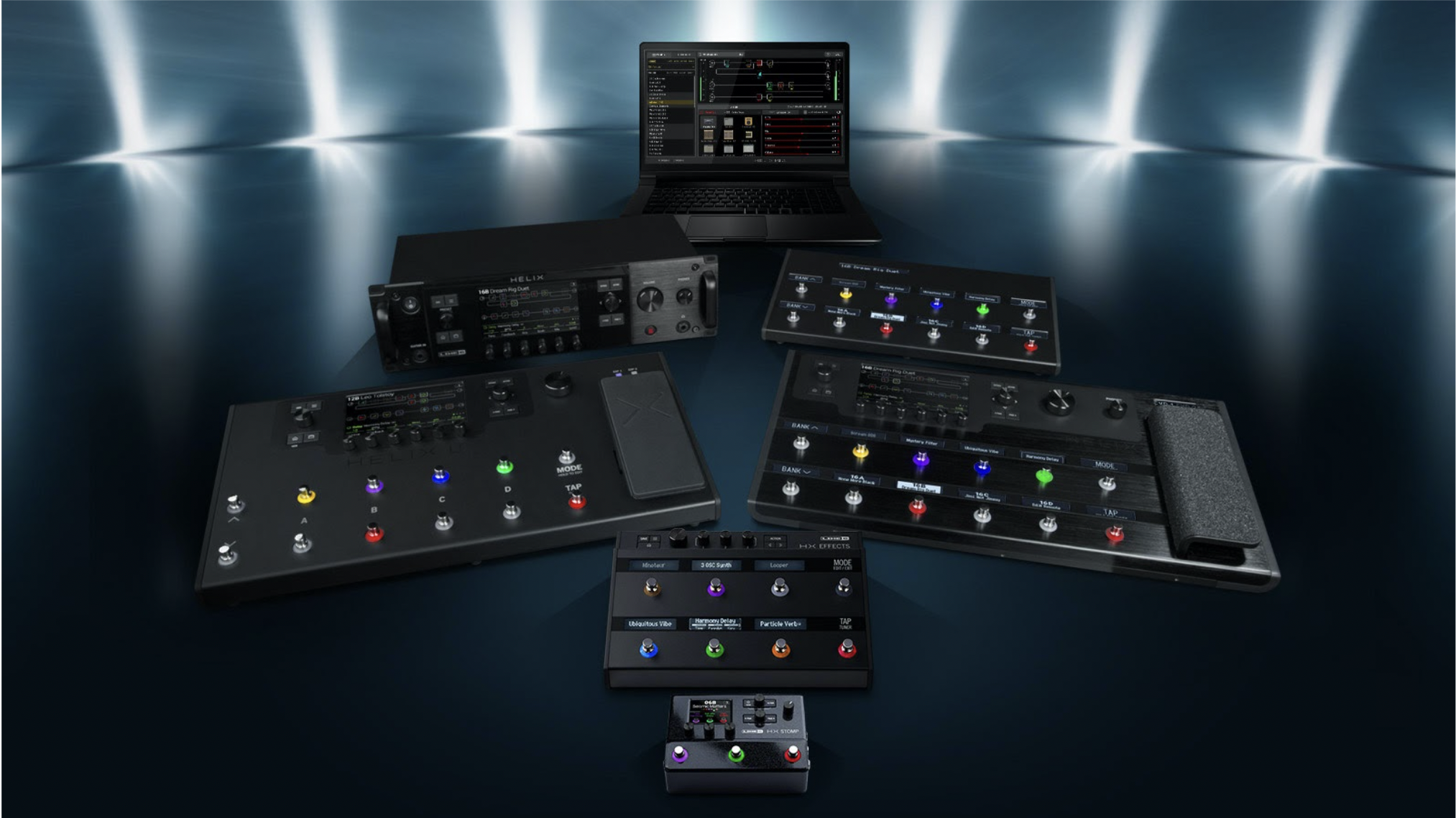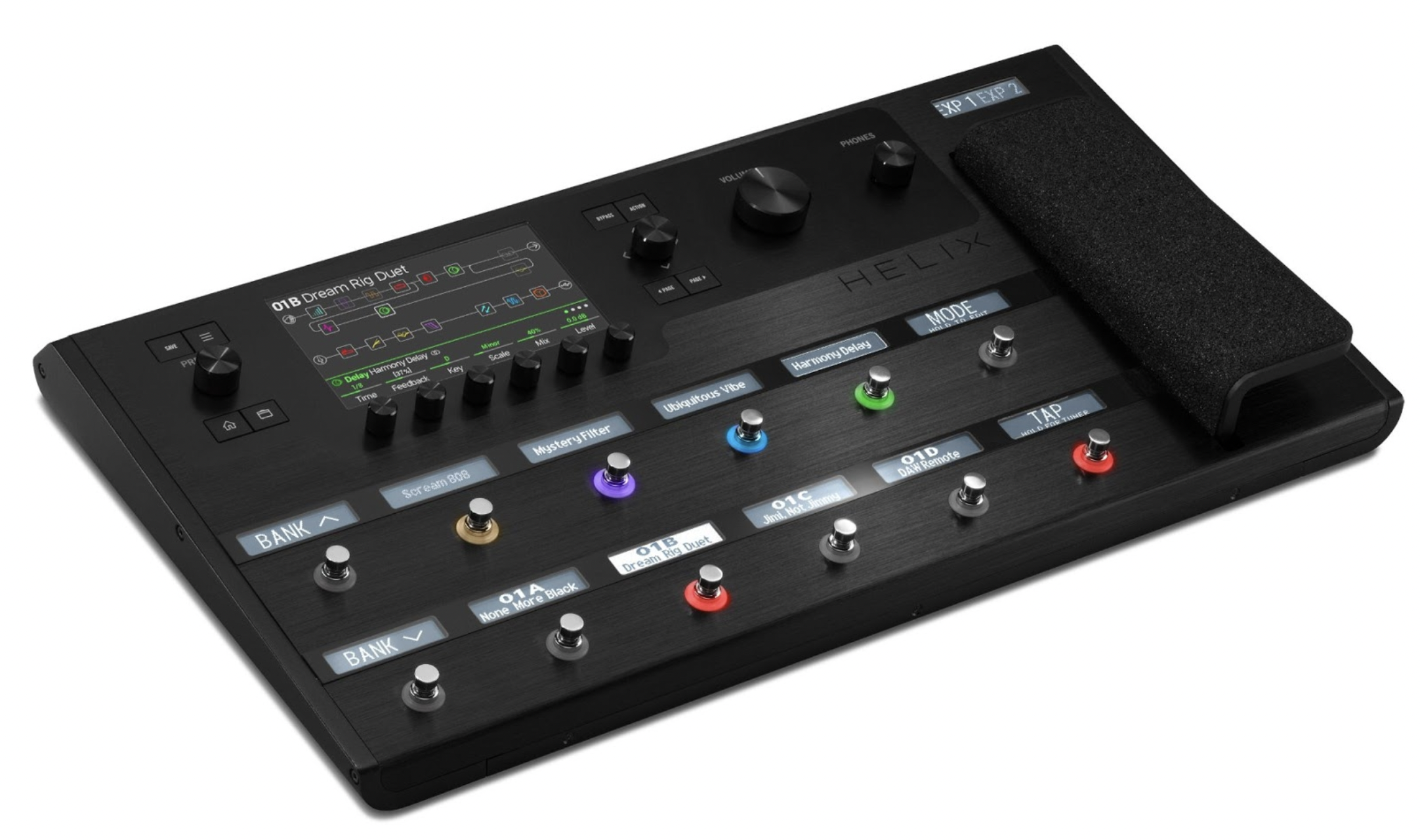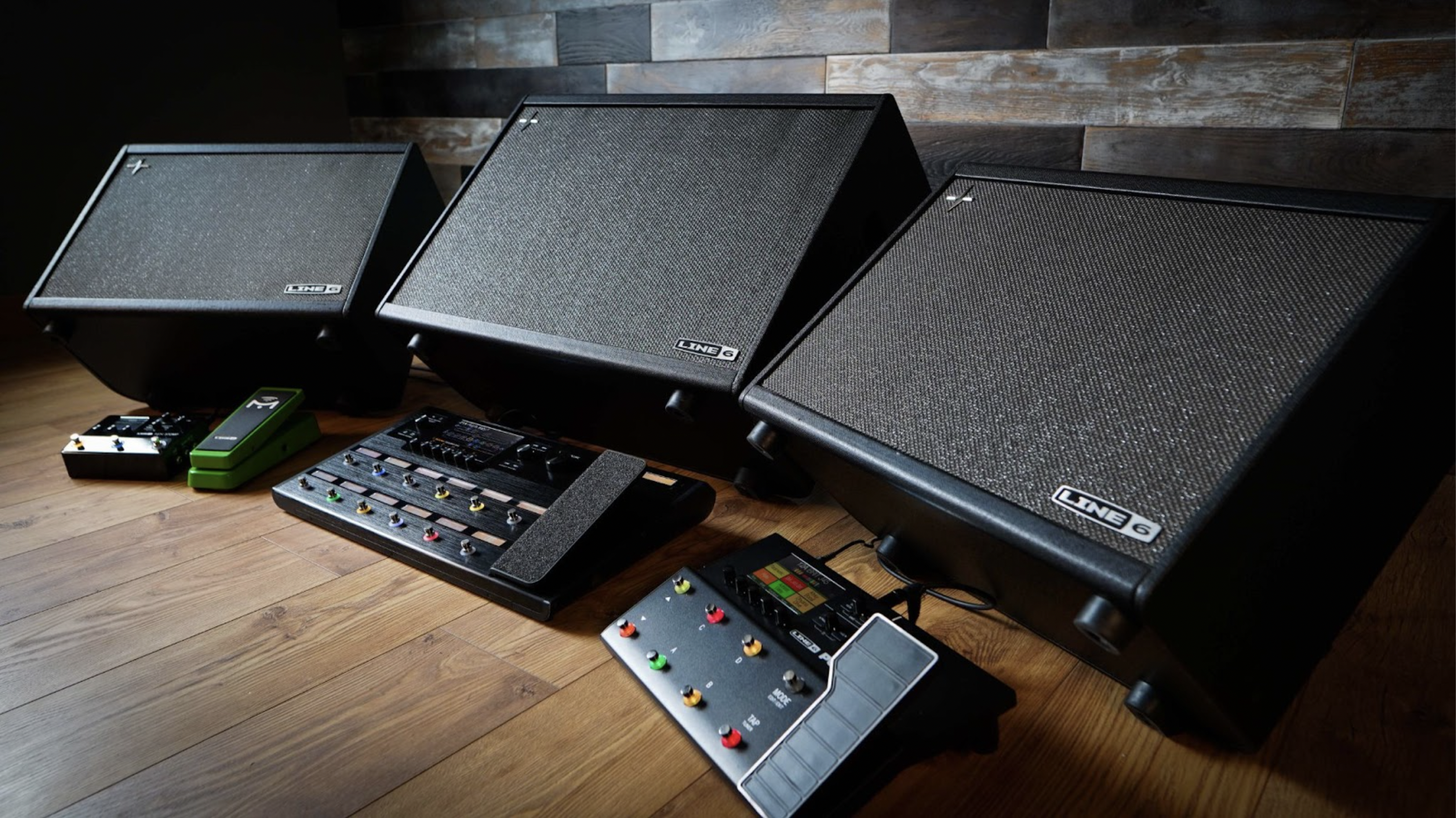Guitar World and Line 6 explore the past, present, and future of the Helix family of amp and effects processors
The flagship processor, which continues to operate on the bleeding edge both sonically and functionally, recently received a major firmware update to version 3.0

The Line 6 Helix Guitar Processor has long been one of the guitar universe’s leading and most exciting amp and effects processors. First, Line 6 released its major Helix 3.0 update, which boasted a wealth of new features, including polyphonic octave tracking and true preset spillover, as well as a dizzying array of new effects and amps.
More recently, Line 6 unveiled another raft of new features with the release of 3.10 firmware, which adds in a new amp, the Mandarin Rocker (based on the Orange Rockerverb 100 MKII), plus five new effects: Ratatouille Dist, based on a 1984 Pro Co Rat; Retro Reel, which simulates playing a signal back from an analog tape machine; Euclidean Delay, which utilizes the Euclidean algorithm to space taps evenly through a particular multitap pattern; and two new reverbs, Dynamic Hall and Hot Springs.
The new features are a testament to Line 6’s continuing quest to provide artists with fresh sounds and sonic frontiers, coupled with a devotion to functionality and ease of use. And smart money would bet that there will be more updates to come.
In the meantime, Guitar World had the opportunity to sit down with Line 6 Chief Product Design Architect Eric Klein to discuss Helix past, present and future. Join us for a unique glimpse into the guitar processor that continues to be a game changer.

The thing that immediately distinguished Helix from other premium amp and effects modelers was its clear, intuitive, and easily navigable user interface. Describe the process behind its development, and any ideas from other technologies that may have served as inspiration.
Eric Klein: Oh man, that’s a big question. It goes all the way back to 2008, two years before I joined Line 6. For various reasons, we had to redesign Helix’s UI and design language from the ground up three times, but the current version really came to fruition after the Mechanical Engineering and Product Design teams took a field trip to Fry’s Electronics, this line of massive electronic stores that have sadly gone out of business.
Two things stuck out – a particular high end stereo receiver with capacitive-sensing buttons, and this one flight simulator joystick. We realized that collectively, we could hide the functionality of 20 or 30 different buttons simply by making our footswitches capacitive-sensing and adding a push-encoder-joystick. So a big reason Helix is easy to use is because its depth is hidden behind relatively transparent input methods. It’s friendly and unassuming, but if you dig in, you’re rewarded with in-depth navigation and switch, controller and MIDI assignments at nearly the speed of thought.
The GUI was largely inspired by the consoles in German cars. I remember running around, asking everyone to let me sit in their car and push buttons, turn knobs, scroll through lists, etc. We also spent a lot of time showing early versions of Helix to everyone from studio engineers to friends’ kids to my mom who didn’t own a cellphone. We figured if both professionals and newbies could find their way around Helix, we were on the right track, and wherever there was a point of friction, we’d mercilessly kill that UI element and pivot.
Clearly we did something right because other companies have lifted huge chunks of our UI/UX whole hog. People initially thought we’d licensed Helix’s UI to one of them.

Helix firmware updates have been provided free from the beginning. What considerations led to the decision to do that?
It’s all very organic; it’s not like we sit around and say “Okay, what must we add in order to sustain Helix’s sales for X number of months?”
As long as new capabilities and sounds are committed to new hardware, the rest of the family gets to inherit them. So the cost of sustained updates is pretty much built into the development of the next product in the family. Some Helix owners rejoiced when HX Stomp XL was announced because they knew that meant more features, models, and effects for them to play with as well.
How many firmware updates have there been over the years and what were a few of the most significant ones?
I think we’re working on our... 15th feature/model update? And probably as many or more bug fix updates as well. 2.0 was the big snapshot update, which made a lot of people happy. 2.5 added something like 70 Legacy effects from earlier Line 6 products, and 3.0 was our big foray into polyphonic pitch algorithms. 3.1 increased our oversampling and I’ve gotta say – we’re really happy that so many of our users hear as big a sonic improvement as we do. We were worried it might be too subtle for some.
When deciding what goes into each update—new amp and effect models, new features, etc.—how much is the result of "in house" ideas and how much is in response to Helix user requests?
It’s a mixture of a lot of things. Could be as simple as Igor [Lead Embedded Firmware Engineer] interacting with some MIDI aficionado on Reddit and adding a Command Center feature overnight. Sometimes it’s an artist who really wants a particular pedal. Sometimes, as is the case with QWERTY hotkeys [controlling any piece of Mac/PC software with your feet], it was my personal pet feature and the rest of the team just wanted me to shut up about it.
We also have this great resource with line6.ideascale.com, where users can submit requests and everyone votes them up and down. But it’s tricky—you can’t just check boxes; you have to be able to read between the lines and understand the true points of friction. For example, no one was specifically asking for snapshots, but that feature alone ended up addressing a dozen or more seemingly disparate IdeaScale requests.
A few of us have personally read hundreds of thousands of posts online about Helix since its release—what people love, what they don’t love, what they’d like to have improved – and after a while, it becomes very clear what needs to be done. No amount of metrics can compete with active, daily communication with your customers.
Is there a "Helix community"? And if so, describe how you and other individuals at Line 6 interact with, and learn from, its members.
Oh, definitely. Not sure if it’s the products we’ve made, our active communication, our transparency with regard to product development and the industry in general, our Helix User Group events at the NAMM show, or what. We have a massive number of passionate guitarists and bassists who love talking/debating about their Helix/HX boxes, and we consider many of them to be good friends at this point.
On the flip side, if community interaction isn’t something you honestly enjoy doing, they'll smell that lack of authenticity and eat you for lunch. And they have every right to. Thankfully, it’s like going to a house party where everyone’s talking about your babies, so it’s easy.

Although Helix remains highly successful, and is updated periodically, it has been a number of years since it was first introduced. Can you give us any sense of what we might expect to see in the future?
We still have big plans for Helix, and there’s always room to improve things sonically, but we can definitely see the very front edge of diminishing returns; that is, faster DSPs won’t make things, say, 5% more like the real amp—we’re deep within that last 5% already. And soon every company will have a world-class multi-effects box in their catalog, so building a better mousetrap is a futile exercise; we need to push in a different direction.
Not sure if it’s a California thing or what, but we have a lot of really heady, almost hippie-like conversations. The problems we talk about these days are far bigger than something Line 6 could ever dream of solving on its own. The Alesis ADAT ushered in the home recording revolution in ’91, and POD pushed modeling to the masses in ‘99. What’s the next big thing? Is there a new product category that can help everyone survive the current state of the music industry? What can inspire musicians to play out now more than they did in the years pre-COVID? Can we help grow the industry to the point where venues and studios open instead of shutter? We may not have the answers, but we’ll die trying.
For more information on the Helix family of guitar processors, head to Line 6.
All the latest guitar news, interviews, lessons, reviews, deals and more, direct to your inbox!
Rich is the co-author of the best-selling Nöthin' But a Good Time: The Uncensored History of the '80s Hard Rock Explosion. He is also a recording and performing musician, and a former editor of Guitar World magazine and executive editor of Guitar Aficionado magazine. He has authored several additional books, among them Kurt Cobain: Montage of Heck, the companion to the documentary of the same name.

